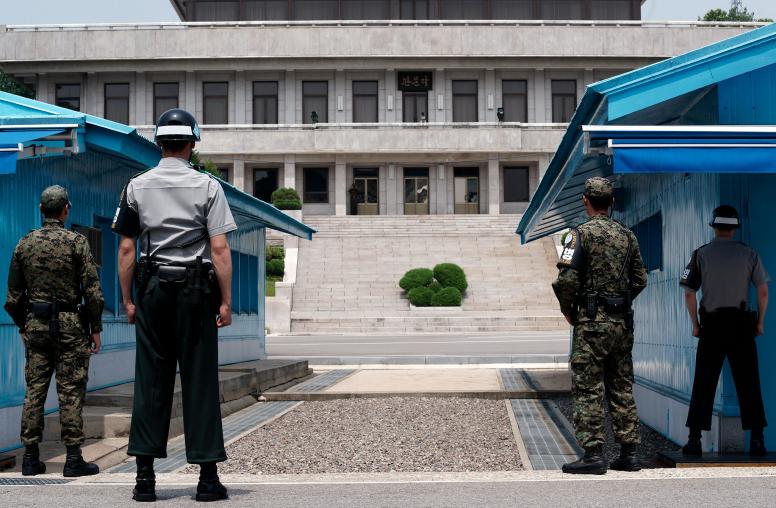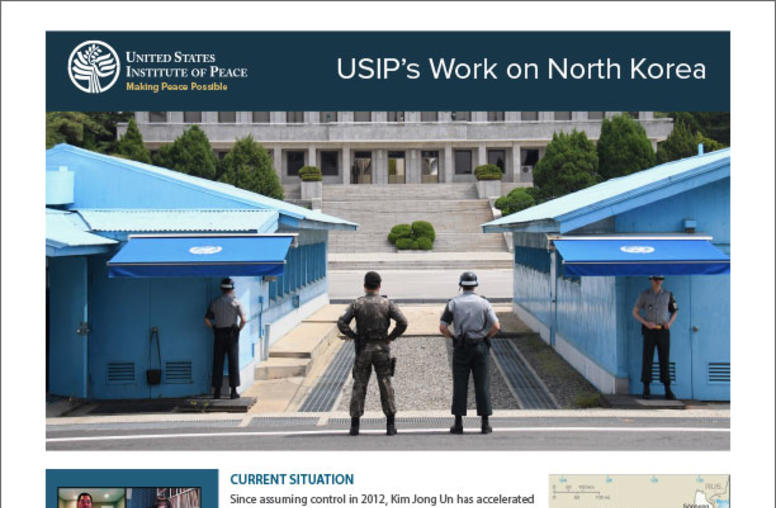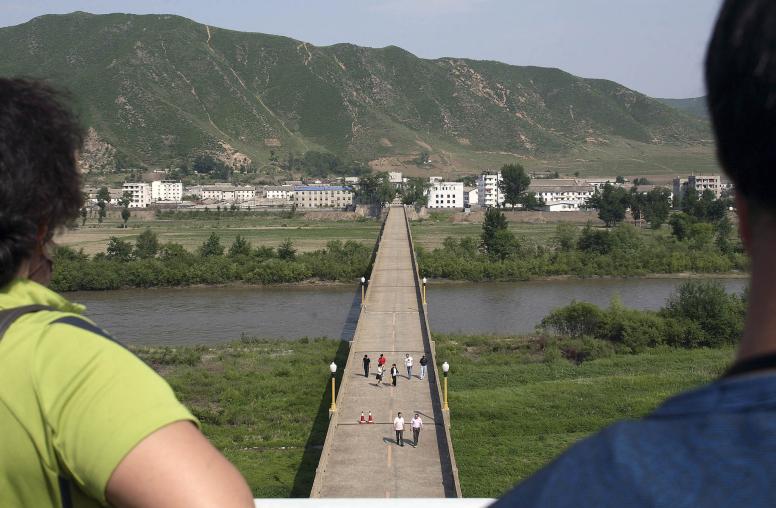Four Ideas for a More Practical Approach to North Korea
Policy boundaries must be substantially widened, recognizing that the ultimate goal for all sides is peace on the Korean Peninsula.
Editor’s note: The following is an excerpt from an article originally published in the Bulletin of the Atomic Scientists.
A significant impediment for the United States is that it continues to narrowly limit its policy options while North Korean capabilities expand unabated. Washington’s window of discourse on North Korea policy largely consists of: Pressure the Kim regime through sanctions; don’t legitimize or reward it until preconditions are met; and don’t make any concessions until the North takes significant denuclearization measures first. To achieve any sustained results, these policy boundaries must be substantially widened to include more realistic and practical measures. We, along with our colleagues at USIP, explored many of these issues in a recent report, “A Peace Regime for the Korean Peninsula.”

1. Prioritize peace in parallel with denuclearization.
The first step is to recognize that the ultimate goal for all sides is peace and stability on the Korean Peninsula. Of course, each side regards peace differently—Washington views it as normalized relations granted after denuclearization, while Pyongyang sees it as the absence of “hostile” U.S. actions prior to denuclearization. But getting North Korea to be a motivated and committed negotiating partner will mean acknowledging its view and harmonizing the two approaches. Pyongyang has consistently called for a new paradigm that fundamentally transforms the relationship between the two countries from enmity to peace. In the June 2018 Singapore Statement, Kim insisted that his commitment to “work toward complete denuclearization” must be matched by a U.S. commitment to establish “new U.S.–DPRK relations” and build “a lasting and stable peace regime on the Korean Peninsula.” Despite the current stalemate in negotiations, Pyongyang tellingly has not renounced the Singapore Statement, which it has done with other previous agreements. The realistic and logical approach is to pursue both peace and denuclearization in parallel. Most of the Six Party partners—South Korea, North Korea, China, and Russia—would endorse this framework quickly.
2. Ensure reciprocity and proportionality.
Negotiating peace and denuclearization in tandem requires a reciprocal, proportional, and simultaneous exchange of concessions that addresses both sides’ interests. The United States has always been comfortable listing all of the denuclearization and human rights measures it wants from the North. However, a balanced approach means acknowledging North Korea’s sovereignty, declaring a formal end to the Korean War, and establishing a pathway to signing a peace treaty and normalizing relations. Early confidence-building measures, such as ending the ban on travel to and from North Korea, establishing liaison offices in each other’s capitals, offering humanitarian assistance, and increasing people-to-people exchanges will help reduce tensions and provide momentum in peace and denuclearization negotiations. Washington will also have to seriously consider when and how to address Pyongyang’s more difficult demands, including relief from economic sanctions, the disposition of joint U.S.–South Korea military exercises, and the deployment of U.S. nuclear and strategic assets to the Korean Peninsula. Conventional arms reduction negotiations would be a good starting point.
3. Emphasize realistic, short-term security payoffs while playing the long game on denuclearization.
For 15 years, Washington has chased the white whale of complete, verifiable, and irreversible denuclearization at the expense of achieving near-term, material reductions in the nuclear threat. But doing so has made the perfect the enemy of the good. North Korea will not easily give up its “treasured sword,” which represents the only noteworthy success in its history. Today, more and more experts recognize that complete denuclearization in the short- and medium-term is a pipedream, but an interim deal that freezes North Korea’s nuclear and missile activities can largely be achieved and verified and would have an immediate security payoff. Timely, tangible progress in addressing each side’s security concerns can then help provide the foundation, trust, and momentum for additional gains down the road.
Denuclearization should still remain a goal. Credible or not, Kim pledged to “work toward complete denuclearization of the Korean Peninsula” in Singapore, and told reporters in Hanoi that “if I’m not willing to [denuclearize,] I wouldn’t be here right now.” Abandoning the goal of North Korea’s denuclearization could sound the death knell for the nonproliferation regime and make it easier for countries like South Korea and Japan to pursue their own nuclear weapons, triggering profound instability in the region and beyond. Washington must pursue denuclearization, but accept the reality that it will entail years of negotiations, numerous setbacks, and sustained confidence-building measures. The key challenge is to have the process persist through changes in administration and periodic breakdowns.
4. Enhance buy-in from regional partners.
A sincere effort at peace and denuclearization will require the participation of China and South Korea, the other main belligerents of the Korean War. Once U.S.-North Korea negotiations achieve even a small opening, the process should quickly be opened to these two countries. Admittedly, broadening the talks would introduce complications and challenges, especially since U.S. strategic goals in the region do not align with China’s. But Washington will not be able to create a sustainable framework for advancing peace and security on the Korean Peninsula without partnering with Beijing and Seoul. At an appropriate time, Tokyo and Moscow should be brought in as well.
North Korea will be watching the U.S. presidential election very closely. Whether the winner is Donald Trump or Joe Biden, Pyongyang will likely test him immediately by manufacturing a crisis to create leverage and kickstart diplomacy on its preferred terms. Instead, the next U.S. president should quickly seize the narrative by signaling that Washington is prepared to discuss both peace and denuclearization with Pyongyang and open up the talks to China and South Korea. Doing so will help establish a practical path to building a new framework for peace and security on the Korean Peninsula.



